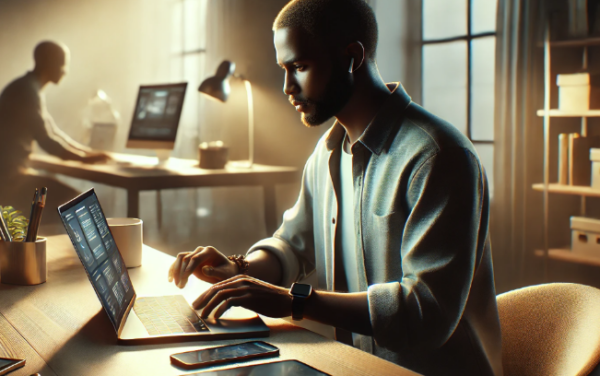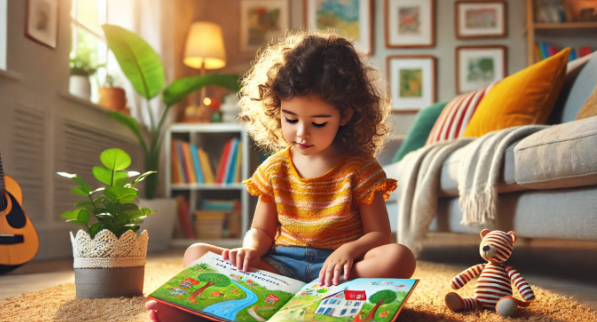Publishing a book is like raising a child—you pour your heart into it, doubt yourself every step of the way, and eventually, you have to send it out into the world and hope it thrives. For first-time self-publishers, the task of getting a book published can feel overwhelming. Where do you start? How do you make sure readers will pick up your book? And why does everyone keep asking if you’ve “secured your ISBN”?
Relax, first-time authors. You’re not the first to navigate this exciting but daunting journey, and with the right plan, you’ll go from staring at a blank page to holding a finished book in your hands. This guide will give you all the tools and insider tips to self-publish like a pro, from perfecting your manuscript to launching a killer marketing campaign. So grab your coffee (or your wine), and let’s dive in!
Understanding the Publishing Landscape
Before diving into self-publishing, it’s essential to know what you’re getting into. The publishing world offers three main routes: traditional publishing, self-publishing, and hybrid publishing. Each has its perks and pitfalls.
- Traditional Publishing: The big dream of getting a deal with established publishers like Penguin Random House sounds glamorous. But let’s be honest: unless you’ve got a literary agent or a New York Times bestseller up your sleeve, it’s an uphill climb. Plus, they rarely accept unsolicited manuscripts. Book publishers like Penguin Random House are known for their rigorous selection process and the professional support they offer to authors.
- Self-Publishing: Total creative freedom, higher royalties, and no need to wait for a publishing deal—but be ready to invest time and money into your own success.
- Hybrid Publishing: The middle ground for those who want professional support without giving up too much control. Hybrid publishing combines elements of traditional and self-publishing, offering authors the best of both worlds. Perfect for authors who like compromise (and coffee-shop Wi-Fi).
Choosing your publishing route depends on your goals, resources, and patience level.
What is Self-Publishing?
Self-publishing is like being the captain of your own ship. You’re in charge of every aspect of the publishing process, from editing and formatting to cover design and marketing. Unlike traditional publishing, where a traditional publisher takes the reins, self-publishing allows you to maintain full creative control and retain all rights to your work. Thanks to the rise of digital platforms and print-on-demand technology, self-publishing has become a viable and popular option for many authors. It’s an exciting journey that offers both freedom and responsibility, making it a perfect choice for those who want to steer their own course in the publishing industry.
Your Publishing Journey Awaits – Start NowPre-Publishing Essentials: Perfecting Your Manuscript
Great books don’t just happen—they’re rewritten, edited, and polished until they shine.
- Start Writing with Purpose: Your debut novel doesn’t need to rival War and Peace, but it should have clear goals, compelling characters, and a plot that doesn’t confuse your beta readers (or your mom).
- Professional Editing: Hiring a professional editor is a must. Even Shakespeare needed an editor (probably). Whether it’s developmental editing or proofreading, fresh eyes will catch mistakes you’ve overlooked. Even a self-published author can benefit greatly from professional editing to ensure their manuscript is polished and ready for publication.
- Beta Readers: These unpaid heroes provide honest feedback. Find people who aren’t afraid to tell you that your antagonist sounds like a Bond villain.
- The Final Check: Before you move forward, ensure your entire manuscript is error-free and polished. You’ll thank yourself later.
Researching the Market
Before you dive into self-publishing, it’s crucial to understand the market you’re entering. Think of it as doing your homework before a big test. Researching the market involves figuring out what types of books are currently popular, which genres are trending, and what readers are craving. Dive into books in your genre, fellow book bloggers, and reviewers, and keep an eye on Amazon bestseller lists. This research will help you craft a story that resonates with readers, identify your target audience, and develop a killer marketing strategy. Knowledge is power, and in the world of self-publishing, it’s your secret weapon.
Laying the Foundation: Preparing to Self-Publish
This stage is where your book transforms from a Word document to something readers can’t wait to buy. Self-publishing a book involves several key steps, from securing an ISBN to designing a professional cover.
- Own Your ISBN: Think of it as your book’s social security number. Without it, your book won’t be listed in bookstores or online retailers.
- Book Cover Design: Don’t DIY this unless you’re a graphic designer. A professional cover is your first chance to attract readers—make it count.
- Formatting Your Manuscript: Whether for print or ebook versions, formatting can make or break your reader’s experience. Hire a pro or use tools designed for self-publishers.
- Distribution Services: Platforms like Amazon KDP and IngramSpark help you reach readers around the globe. Choose wisely based on your goals.
Book Cover Design
Never judge a book by its cover. Well, readers do it all the time. Your book cover is your first chance to make a great impression, so it needs to be eye-catching and professional. If you’re not a graphic designer, it’s worth hiring a pro to create a cover that stands out in a crowded market. When designing your cover, consider the genre, target audience, and tone of your book. A well-designed cover not only attracts potential readers but also sets the right expectations for your story. Remember, a picture is worth a thousand words, and in self-publishing, it could be worth a thousand sales.
Interior Design and Formatting
The inside of your book should be as polished as the outside. Professional interior design and formatting ensure that your book is easy to read and visually appealing. Clear headings, proper margins, and a readable font are essential. You can hire a professional or use software like Microsoft Word or Adobe InDesign to get the job done. Consistency is key—your interior design should match the cover design and reflect the tone and genre of your book. A well-formatted book not only enhances the reading experience but also shows that you take your self-publishing journey seriously.
The Business of Self-Publishing: Setting Realistic Expectations
Self-publishing is a business, and like any business, it comes with costs and challenges.
- Costs to Expect: Editing, cover design, formatting, and marketing aren’t free. Budget accordingly to avoid unpleasant surprises.
- Time Investment: Writing your book was just the beginning. Self-publishing requires time to perfect, publish, and promote.
- Legalities and Copyrights: Protect your intellectual property before sharing your masterpiece with the world.
- Hybrid Publishers and Publishing Services: These can save time, but ensure they’re reputable before signing any contracts.
Setting a Realistic Budget
Self-publishing is an investment, and like any good investment, it requires a realistic budget. Consider the costs of editing, cover design, formatting, and marketing when planning your budget. These expenses can vary widely, so it’s important to research the costs of different services and set a budget that you can stick to. Remember, you get what you pay for, so don’t skimp on quality. A well-planned budget ensures that you can afford the services you need to produce a professional-quality book without breaking the bank.
Creating a Deadline Schedule
Deadlines are your best friend in the self-publishing process. Creating a realistic deadline schedule helps you stay organized, focused, and on track. Set deadlines for each stage of the publishing process, including editing, cover design, formatting, and marketing. Be sure to build in some flexibility for unexpected delays or setbacks. A well-structured schedule not only keeps you accountable but also ensures that you’re making steady progress toward your goal. Remember, Rome wasn’t built in a day, and neither is a best-selling book. Patience and persistence are key.
Your Publishing Journey Awaits – Start NowLaunching Your Book: Marketing Strategy for Self-Published Authors
Your book won’t sell itself—unless it’s about how to sell books.
- Crafting a Book Description: This is your elevator pitch. Make it concise, compelling, and irresistible to potential readers.
- Building a Marketing Campaign: Social media ads, email newsletters, and influencer partnerships can help your book reach the masses.
- Query Letters and Media Outreach: Approach bloggers, journalists, and podcasters with a polished pitch to secure reviews and interviews.
- Brick-and-Mortar Bookstores: Build relationships with local shops to get your book on shelves. Bonus: they may even host a book signing!
- Reader Reviews: Encourage reviews from readers—they’re the lifeblood of your book’s success. Pro tip: don’t bribe them (Amazon frowns on that).
The Self-Published Author’s Guide to Book Sales
Selling books isn’t just about numbers—it’s about building relationships with readers.
- Tracking Sales: Use tools like Amazon Author Central to monitor your performance.
- Maximizing Distribution: Offer hardcover books, audiobooks, and digital formats to cater to all readers.
- Engaging with Readers: Build an email list and interact on social media to nurture your audience and encourage repeat purchases.
Looking Ahead: Growing as a Published Author
Self-publishing doesn’t end with your first book—it’s just the beginning.
- What Comes After Your Debut Novel: Start writing your next book while momentum is high.
- Building Author Credibility: Aim for awards, reviews, and visibility to attract literary agents or traditional publishers.
- Exploring Traditional Publishing: With your self-published success, you might consider the traditional publishing route for future projects.
First-Time Self-Publishers: From Dream to Reality
Congratulations—you’ve just navigated the ultimate checklist for first-time self-publishers. Whether you choose to self-publish, traditionally publish, or try hybrid publishing, the key is persistence. Remember, every successful writer once sat where you are now, staring at a manuscript and wondering how to publish a book.
Ready to make your publishing dreams a reality? Let Spines guide you through every step of your publishing journey and turn your debut novel into a bestseller!
Your Publishing Journey Awaits – Start Now







